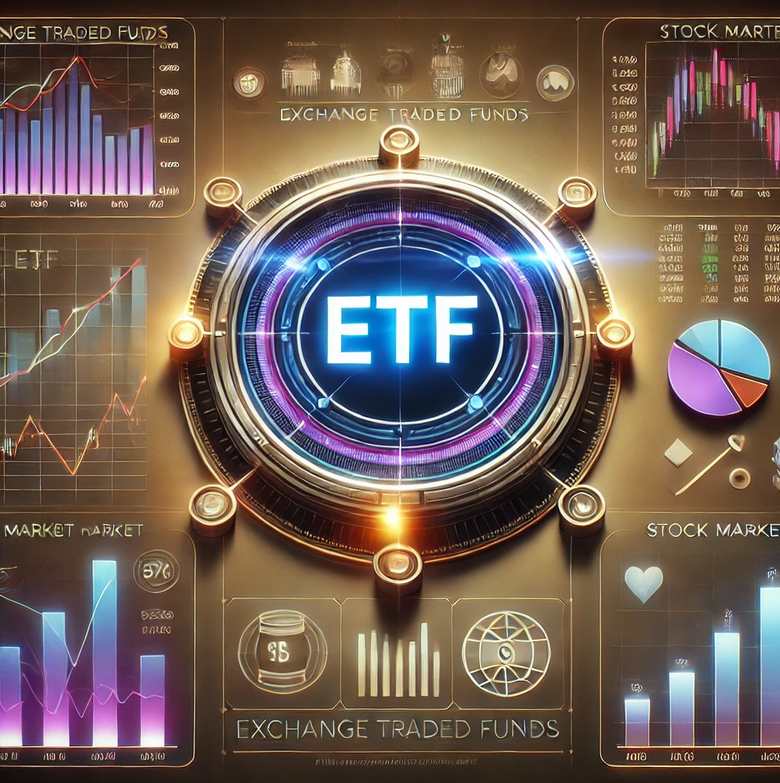This article explores what ETFs are, their key features, and the different types available in the market.
What is an ETF?
An Exchange-Traded Fund (ETF) is an investment fund that holds a diversified portfolio of assets such as stocks, bonds, commodities, or other securities. Unlike mutual funds, which are only traded at the end of the trading day at a set price, ETFs are traded on stock exchanges throughout the day, similar to individual stocks. ETFs typically track a specific index, sector, or asset class, providing investors with exposure to a broad range of assets within a single investment.
ETFs are designed to offer an efficient way for investors to gain exposure to different markets, industries, or investment strategies without the need to buy individual securities. Their popularity has grown significantly due to their cost-effectiveness and ease of trading.
Key Features of ETFs
ETFs offer several benefits that make them a preferred choice for investors. Below are some of their key features:
- Diversification: ETFs provide access to a wide range of assets, reducing the risk associated with investing in individual stocks or bonds. A single ETF can include hundreds or even thousands of securities, helping investors spread risk across various industries or regions.
- Liquidity and Flexibility: Unlike mutual funds, which are priced once per day, ETFs can be bought and sold at any time during market hours at prevailing market prices. This allows investors to react quickly to market movements and execute trades efficiently.
- Lower Costs: ETFs typically have lower expense ratios than mutual funds because they are often passively managed. Passive ETFs track an index, reducing the need for active management and associated fees.
- Transparency: Most ETFs disclose their holdings daily, allowing investors to see exactly what assets they own. This level of transparency helps investors make informed decisions about their investments.
- Tax Efficiency: ETFs are structured to be more tax-efficient than mutual funds. Due to their unique creation and redemption process, investors are less likely to incur capital gains taxes until they sell their ETF shares.
- Accessibility: ETFs provide exposure to various asset classes, including international markets, commodities, and bonds, allowing investors to diversify their portfolios easily.
Types of ETFs
ETFs come in many different forms, catering to various investment strategies and risk appetites. Below are some of the most common types:
- Stock ETFs: These ETFs track stock indices such as the S&P 500, Nasdaq-100, or Dow Jones Industrial Average. They offer broad market exposure and are ideal for investors looking to invest in equities with lower risk than picking individual stocks.
- Bond ETFs: These ETFs invest in fixed-income securities, including government bonds, corporate bonds, and municipal bonds. Bond ETFs provide a stable income stream and are often used to balance risk in a diversified portfolio.
- Commodity ETFs: Designed to track the performance of commodities like gold, silver, oil, or agricultural products, these ETFs allow investors to gain exposure to physical commodities without directly purchasing them.
- Sector and Industry ETFs: These ETFs focus on specific sectors such as technology, healthcare, energy, or finance. Investors who believe a particular industry will perform well can use sector ETFs to capitalize on growth opportunities.
- Thematic ETFs: Thematic ETFs invest in emerging trends such as artificial intelligence, renewable energy, blockchain, or cybersecurity. These funds allow investors to focus on long-term growth themes.
- Inverse and Leveraged ETFs: Inverse ETFs aim to profit from declining markets by moving in the opposite direction of an index. Leveraged ETFs use derivatives to amplify returns, providing higher potential gains (or losses) than traditional ETFs.
Conclusion
ETFs offer a cost-effective, diversified, and flexible way to invest in various asset classes. Their low costs, tax efficiency, and accessibility make them an attractive option for both individual and institutional investors. By understanding the key features and different types of ETFs, investors can make better-informed decisions and align their portfolios with their financial goals. Whether you're looking for broad market exposure, sector-specific investments, or alternative asset classes, ETFs provide an excellent investment vehicle to meet your needs.
